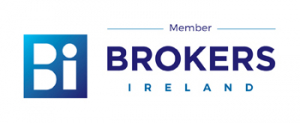Late 2007 brought the beginning of the Global Financial Crisis, considered to be on par with the Great Depression.
The crisis was triggered in the US as the housing bubble burst and the combination of subprime lending and the complex financial structures underpinning the debt caused a wave of problems for global financial institutions. There was a chain reaction throughout global economies and closer to home our own property bubble burst exposing the weakness of Irish Financial institutions, the main player being Anglo Irish Bank. In September 2008 Ireland officially entered recession and it was not until early 2009 that the full impact of the Irish banking crisis was exposed. Ireland did not officially exit the recession until September 2013.
It’s a story we all know only too well. It had a huge personal impact on many pension savers and investors. We know that since March 2009, there has been continued growth, predominantly in US equity markets. The question economists and fund managers ponder the most is when will this unprecedented period of growth come to an end? For the rest of us the main question is: “What lessons have we learned since 2007 that will ensure we do not to make the same mistakes again and protect us from large losses in the future?
Inexperienced Investors make “reactionary” investment decisions…
At the beginning of the crisis, markets fell sharply, and by end of 2008, Pension savers and investors had seen losses of close to 40% of their fund values. With Pension savers, our experience is that only 20% of people make any investment decisions over the lifetime of their savings. However, in the downturn, the majority of those that did make a decision, opted out of the markets so as not to face any further losses. This on the surface seemed reasonable however, the markets turned upwards in 2009, and we are now close to 6 years of growth. Most of those that opted out at the bottom did not participate in the upturn, thereby locking in the losses. Similarly, investors often react to rising values, buying in at the top of the market, when it has become expensive and there is less growth to be made. Others simply avoid the markets altogether, unable to see any value, only losses. This overreaction by investors makes sense according to behavioural economists, such as Meir Statman, professor of finance at Santa Clara University, who says “We have a tendency to extrapolate not only the most recent experience, but the most vivid,” he said. “Even though the market has gone up substantially, when people think about it, they don’t think that it’s gone up.” In other words, investors remember the trauma of the losses, and nothing else.
We are more risk averse than we think….
In 2007, the majority of Pension Assets were invested in Managed Fund or Consensus funds. They were structured to suit a medium risk investor and were used as the default option by most pension managers. They allow for a proportion to be allocated towards equity markets, with the balance spread between assets such as Cash, Property and Bonds. Bonds traditionally have a low correlation to equities and could be expected to provide a cushion to the fund with any dips in equity markets. By the end of 2007, beginning of 2008, most of these funds had up to 75-80% in equities, a level that proved to be far too high risk for the ordinary investor. We also learned, Bonds did not react to the market downturn as we traditionally had expected. This lesson seems to have been learned well, with an entire new generation of Funds, now called multi asset funds. These funds have a similar structure to the managed funds, however, they have stricter parameters for asset allocations and are rebalanced regularly to ensure that the allocations don’t “drift” far from these parameters. Nowadays you can expect an equity allocation of between 50% & 60% for that of a medium risk investor.
Diversification is key…
Simply put, you don’t put all your eggs in one basket. The approach of buying 6 “cheap” apartments on a beach in Bulgaria has proven to be a mistake. As has tying all your investments up in seemingly secure Irish bank shares! A diversified pension fund or investment portfolio can reduce the overall risk of a fund by spreading the allocation across a variety of asset classes. The idea is that the risk of the fund or portfolio is lower because of this spread and therefore the overall risk is lower than the risk of each of the individual asset classes. Some additions to diversification in the above mentioned new generation multi asset funds is the addition of an asset class of “Alternatives”. This can be anything from Absolute Return strategies, which seek to make returns based on a set of techniques different to that of the standard real return, or commodities such as Forestry or Energy. Alternatives should offer low correlation with Equities.
The lesson when it comes to investing is: we are often our own worst enemies! The answer is to engage a professional who will take a non-emotional view of your investment portfolio and advise you accordingly.
Here to help you navigate your way to financial security.
The Milestone Advisory team are qualified financial services consultants. We specialise in helping professionals in the construction sector and related industries. Our team will work with you to review your finances, explaining your options in clear English.
No jargon – just the facts.
For further information please contact Susan O’Mara via email or phone: (01) 406 8020. Milestone Advisory DAC t/a Milestone Advisory is regulated by the Central Bank of Ireland.





